Keo Pagoda, a gem of Vietnamese cultural heritage, faces several significant threats to its long-term preservation. SIXT.VN understands the importance of preserving these historical sites and offers services that allow you to explore Vietnam’s rich heritage responsibly. These threats range from environmental factors to human impact, but with careful planning and sustainable tourism practices, we can help protect Keo Pagoda for future generations. Discover the unique charm of Vietnamese temples and pagodas with SIXT.VN’s cultural tours, ensuring a memorable and educational experience.
1. What is the Historical Significance of Keo Pagoda?
Keo Pagoda, also known as Than Quang Tu, holds immense historical significance as one of Vietnam’s most ancient and beautiful pagodas. Established nearly 400 years ago in Duy Nhat commune, Vu Thu district, Thai Binh province, it stands as a testament to traditional Vietnamese architecture and religious devotion. The pagoda is renowned for its intricate wooden structures, including the national treasures of the incense burner and the meticulously carved dragon doors. These artifacts offer invaluable insights into the artistic and cultural practices of the 17th century. Keo Pagoda not only serves as a religious site but also as a cultural hub where festivals and traditional ceremonies are held, preserving and celebrating Vietnamese heritage.
1.1 Why is Keo Pagoda Considered a National Treasure?
Keo Pagoda is designated as a Special National Monument, reflecting its outstanding historical, cultural, and architectural value. The wooden structures within the pagoda are prime examples of traditional Vietnamese craftsmanship, showcasing unique designs and intricate carvings that have been preserved for centuries.
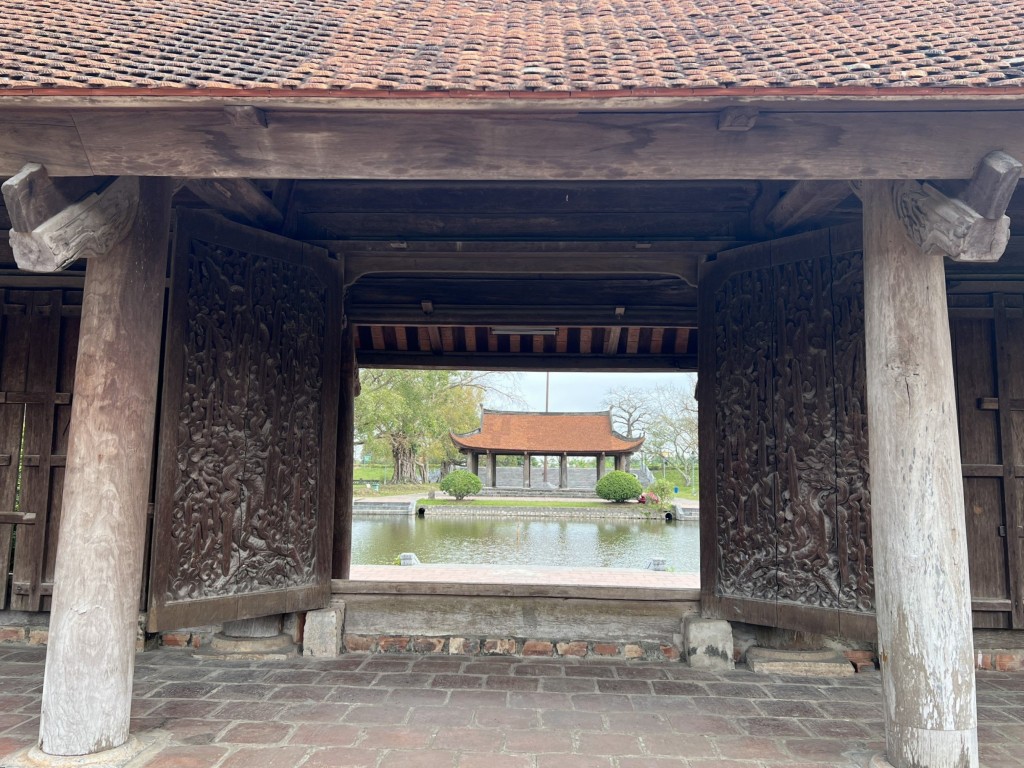 Intricate dragon carvings on wooden doors, symbolizing the pagoda's cultural significance.
Intricate dragon carvings on wooden doors, symbolizing the pagoda's cultural significance.
1.2 What are the Key Architectural Features of Keo Pagoda?
Keo Pagoda is celebrated for its traditional Vietnamese architectural style, which includes multi-tiered roofs, intricate wooden carvings, and a harmonious layout. The pagoda complex comprises various structures such as the bell tower, main hall, and corridors, each meticulously designed to reflect Buddhist cosmology and Vietnamese aesthetics. The dragon doors, crafted in the 17th century, feature elaborate carvings of dragons and other mythical creatures, demonstrating the skilled craftsmanship of the period. The incense burner, another national treasure, showcases detailed carvings and serves as a central piece for religious rituals.
2. What are the Major Environmental Threats Facing Keo Pagoda?
Keo Pagoda faces several environmental threats that pose significant challenges to its preservation. These include climate change impacts such as increased flooding and humidity, which can accelerate the decay of the pagoda’s wooden structures. Air pollution from nearby industrial activities also contributes to the erosion of the pagoda’s surfaces and carvings. Natural disasters, such as storms and earthquakes, present immediate risks of structural damage. Additionally, inadequate drainage systems around the pagoda can lead to waterlogging, further threatening the foundations and stability of the site. Addressing these environmental challenges requires comprehensive strategies to mitigate their effects and ensure the long-term preservation of Keo Pagoda.
2.1 How Does Climate Change Impact Keo Pagoda’s Preservation?
Climate change significantly affects Keo Pagoda through increased humidity, which promotes mold growth and wood rot, deteriorating the structures. Rising temperatures and altered rainfall patterns exacerbate these issues, leading to accelerated decay. Extreme weather events like floods and storms can cause immediate physical damage to the pagoda. According to a 2023 report by the Institute for Environmental Science, climate change-induced environmental degradation poses a serious threat to historical sites in Southeast Asia.
2.2 What Role Does Air Pollution Play in the Deterioration of the Pagoda?
Air pollution, particularly from industrial sources and vehicle emissions, deposits acidic pollutants on Keo Pagoda’s surfaces, leading to corrosion and erosion of the stone and wood. These pollutants can also damage intricate carvings and architectural details, diminishing the pagoda’s aesthetic and historical value. Regular monitoring and mitigation strategies are essential to reduce the impact of air pollution. According to the Vietnam National Environmental Monitoring Agency, air quality in Thai Binh province requires continuous monitoring to protect cultural heritage sites.
2.3 How Do Natural Disasters Threaten the Structural Integrity of Keo Pagoda?
Natural disasters such as typhoons, floods, and earthquakes pose direct threats to Keo Pagoda’s structural integrity. Strong winds and heavy rainfall can damage roofs, walls, and foundations, while earthquakes can cause significant structural instability. Adequate disaster preparedness and structural reinforcement are necessary to minimize the impact of these events. According to the Disaster Management Center of Vietnam, historical sites in vulnerable regions need comprehensive disaster risk assessments and mitigation plans.
3. What are the Human-Induced Threats to Keo Pagoda’s Preservation?
Human activities pose several threats to the preservation of Keo Pagoda, including unsustainable tourism practices, vandalism, and inadequate conservation efforts. Mass tourism can lead to overcrowding, increased wear and tear on the site, and damage to delicate artifacts. Vandalism, though less frequent, can result in direct damage to the pagoda’s structures and carvings. Furthermore, a lack of comprehensive conservation plans and funding can hinder efforts to maintain and restore the site properly. Addressing these human-induced threats requires sustainable tourism management, enhanced security measures, and increased investment in conservation initiatives.
3.1 How Does Tourism Impact the Preservation of Keo Pagoda?
Tourism, while beneficial for local economies, can also negatively impact Keo Pagoda. Increased foot traffic causes wear and tear on the pagoda’s ancient structures. Lack of visitor awareness can lead to damage to artifacts and disruption of the site’s tranquility. Sustainable tourism practices, such as guided tours and visitor management, are crucial to mitigating these effects. According to a 2022 study by the Vietnam National Administration of Tourism, implementing sustainable tourism practices can help preserve cultural heritage sites while still supporting local economies.
3.2 What Security Challenges Does Keo Pagoda Face?
Keo Pagoda faces security challenges such as the risk of theft and vandalism, which can damage or remove valuable artifacts and architectural elements. Implementing robust security measures, including surveillance systems and trained personnel, is essential to protect the pagoda from these threats. Community involvement in monitoring and reporting suspicious activities can also enhance security efforts. According to the Ministry of Culture, Sports and Tourism, increased security measures are necessary to protect historical sites from vandalism and theft.
3.3 What are the Consequences of Inadequate Conservation Efforts?
Inadequate conservation efforts can lead to the gradual deterioration of Keo Pagoda’s structures and artifacts. Lack of funding, expertise, and comprehensive plans can result in delayed repairs, improper restoration techniques, and irreversible damage. Prioritizing conservation and securing sufficient resources are essential to ensure the long-term preservation of the pagoda. According to UNESCO, proactive conservation strategies are vital for preserving cultural heritage sites and preventing irreversible damage.
4. What are the Specific Threats to the National Treasures Within Keo Pagoda?
The national treasures within Keo Pagoda, including the incense burner (Huong An) and the dragon-carved wooden doors, face unique threats that require specialized preservation strategies. The wooden doors are vulnerable to humidity, insects, and physical damage from handling. The incense burner, with its intricate carvings, is susceptible to dust accumulation, corrosion from environmental pollutants, and damage from improper cleaning methods. Regular monitoring, controlled environmental conditions, and expert conservation treatments are essential to safeguard these invaluable artifacts.
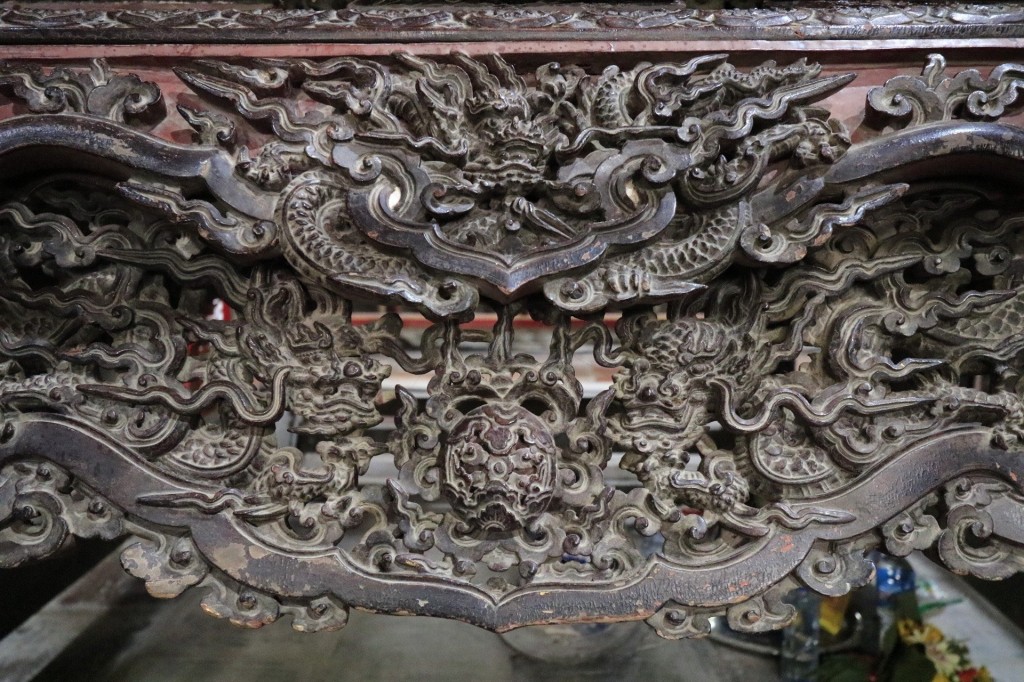 The ancient incense burner (Huong An), a national treasure requiring specialized preservation.
The ancient incense burner (Huong An), a national treasure requiring specialized preservation.
4.1 How Does Humidity Affect the Wooden Doors?
Humidity is a significant threat to the wooden doors, as it promotes the growth of mold and fungi, leading to wood rot and structural weakening. Fluctuations in humidity levels cause the wood to expand and contract, resulting in cracks and damage to the intricate carvings. Maintaining stable humidity levels through environmental control systems is crucial for preserving the doors. According to the National Center for Preservation of Historical Artifacts, controlling humidity is essential for preventing wood decay in historical structures.
4.2 What Measures Can Protect the Incense Burner from Environmental Damage?
Protecting the incense burner from environmental damage involves several measures, including regular cleaning to remove dust and pollutants, controlled humidity and temperature to prevent corrosion, and protective coatings to shield the surface from environmental factors. Proper handling and storage techniques are also essential to prevent physical damage. The Vietnam Museum of Fine Arts recommends using non-abrasive cleaning methods and storing artifacts in stable environmental conditions.
4.3 How Can Improper Handling Damage These Artifacts?
Improper handling can cause significant damage to the incense burner and wooden doors, including scratches, dents, and breakage of delicate carvings. Educating visitors and staff on proper handling techniques and implementing strict guidelines are essential to prevent accidental damage. Using protective barriers and limiting physical contact can also help preserve these artifacts. The International Council of Museums emphasizes the importance of trained personnel and strict handling protocols for preserving cultural artifacts.
5. What are the Conservation Efforts Currently in Place at Keo Pagoda?
Current conservation efforts at Keo Pagoda involve a range of initiatives aimed at preserving its structures and artifacts. These include regular structural inspections, restoration projects to repair damaged elements, and environmental monitoring to control humidity and temperature. Additionally, efforts are being made to enhance security measures, promote sustainable tourism practices, and educate visitors about the importance of preserving the pagoda. Collaboration between local authorities, conservation experts, and community members is crucial for the success of these efforts.
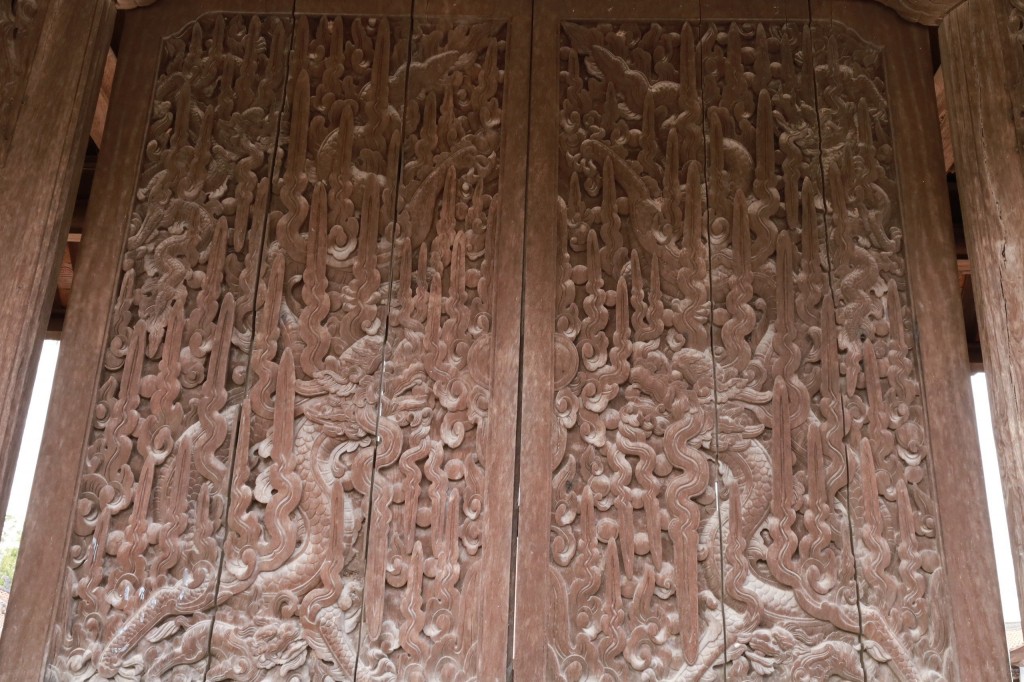 Artisans restoring intricate carvings on Keo Pagoda, showcasing ongoing conservation efforts.
Artisans restoring intricate carvings on Keo Pagoda, showcasing ongoing conservation efforts.
5.1 What Structural Inspections are Conducted?
Regular structural inspections are conducted to identify signs of damage, decay, or instability in Keo Pagoda’s buildings. These inspections involve assessing the condition of the wooden frames, roofs, walls, and foundations. Early detection of problems allows for timely repairs and prevents further deterioration. The Institute for Building Technology and Construction recommends conducting structural inspections at least annually to ensure the stability of historical buildings.
5.2 How are Damaged Elements Being Restored?
Restoration projects focus on repairing damaged elements using traditional materials and techniques to maintain the historical integrity of Keo Pagoda. These projects may involve replacing rotted wood, repairing cracked walls, and restoring faded paintwork. Skilled artisans and conservation experts are essential for ensuring that restoration work is carried out correctly. The Vietnam National Heritage Administration emphasizes the importance of using authentic materials and techniques in restoration projects.
5.3 What Environmental Monitoring is in Place?
Environmental monitoring involves tracking humidity, temperature, and air quality levels to assess their impact on Keo Pagoda’s structures and artifacts. Sensors and monitoring equipment are used to collect data, which is then analyzed to identify potential threats and inform conservation strategies. Adjustments to ventilation, heating, and cooling systems can be made to maintain optimal environmental conditions. The National Center for Atmospheric Monitoring provides data and recommendations for environmental monitoring at cultural heritage sites.
6. What Sustainable Tourism Practices Can Help Preserve Keo Pagoda?
Sustainable tourism practices are essential for minimizing the negative impacts of tourism on Keo Pagoda and ensuring its long-term preservation. These practices include limiting visitor numbers, promoting responsible behavior, supporting local businesses, and investing in conservation efforts. Guided tours can educate visitors about the pagoda’s history and significance, encouraging them to respect the site and its artifacts. Encouraging visitors to use eco-friendly transportation and reduce waste can further minimize their environmental footprint.
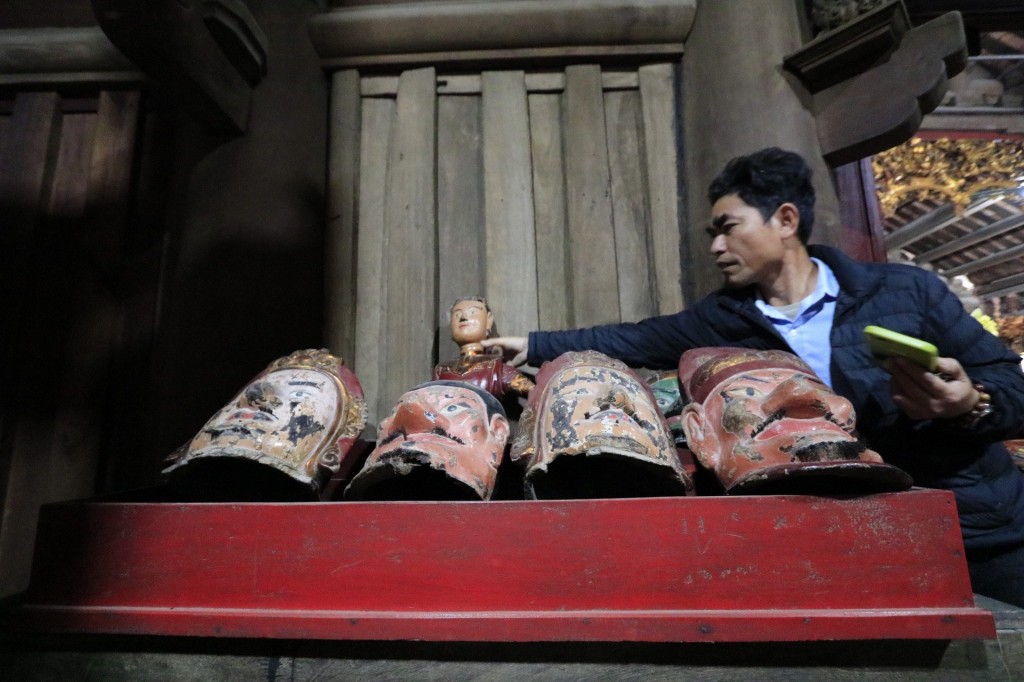 Visitors respectfully observing Keo Pagoda, promoting sustainable tourism.
Visitors respectfully observing Keo Pagoda, promoting sustainable tourism.
6.1 How Can Limiting Visitor Numbers Help?
Limiting visitor numbers reduces the physical impact on Keo Pagoda’s structures and artifacts, preventing overcrowding and wear and tear. Implementing a reservation system or timed entry can help manage visitor flow and ensure a more enjoyable experience for everyone. The Cultural Heritage Protection Agency recommends limiting visitor numbers at sensitive historical sites to minimize damage.
6.2 What is the Role of Responsible Visitor Behavior?
Responsible visitor behavior is crucial for preserving Keo Pagoda, including respecting the site’s rules and guidelines, avoiding touching or damaging artifacts, and refraining from littering. Educating visitors about the importance of these behaviors can encourage them to act responsibly and contribute to the pagoda’s preservation. The Tourism Concern organization promotes responsible tourism practices and provides guidelines for visitors to cultural heritage sites.
6.3 How Can Supporting Local Businesses Contribute to Preservation?
Supporting local businesses through tourism can provide economic benefits to the community, which can then be reinvested in conservation efforts at Keo Pagoda. Purchasing local products, dining at local restaurants, and hiring local guides can help stimulate the local economy and promote sustainable tourism. The World Tourism Organization emphasizes the importance of economic benefits for local communities in sustainable tourism initiatives.
7. How Can Technology Aid in the Preservation of Keo Pagoda?
Technology plays a crucial role in modern conservation efforts at Keo Pagoda, enhancing monitoring, documentation, and restoration processes. Advanced imaging techniques such as 3D scanning and photogrammetry can create detailed digital models of the pagoda, aiding in structural analysis and restoration planning. Environmental sensors and monitoring systems provide real-time data on temperature, humidity, and air quality, allowing for proactive adjustments to protect the site. Digital databases and online platforms can also improve documentation and accessibility of information about Keo Pagoda for researchers and the public.
7.1 What are the Benefits of 3D Scanning?
3D scanning provides detailed and accurate digital models of Keo Pagoda’s structures, allowing for precise analysis of structural conditions. These models can be used for creating restoration plans, monitoring changes over time, and providing virtual tours for remote visitors. The Getty Conservation Institute uses 3D scanning to document and preserve cultural heritage sites around the world.
7.2 How Do Environmental Sensors Help?
Environmental sensors continuously monitor conditions such as temperature, humidity, and air quality, providing real-time data to inform conservation efforts. This data helps identify potential threats and allows for adjustments to environmental control systems to protect the pagoda’s structures and artifacts. The National Oceanic and Atmospheric Administration (NOAA) provides data and resources for environmental monitoring and preservation.
7.3 How Can Digital Databases Improve Accessibility?
Digital databases can store and organize vast amounts of information about Keo Pagoda, including historical documents, photographs, and research findings. These databases can be made accessible online, allowing researchers, conservationists, and the public to access information and contribute to preservation efforts. The Smithsonian Institution Archives uses digital databases to preserve and share information about cultural heritage.
8. What Role Do Local Communities Play in Preserving Keo Pagoda?
Local communities are essential stakeholders in the preservation of Keo Pagoda, as they have a deep connection to the site and its cultural significance. Engaging local residents in conservation efforts can foster a sense of ownership and responsibility, ensuring the long-term protection of the pagoda. Community involvement may include participating in restoration projects, monitoring the site for vandalism, and promoting sustainable tourism practices. Local knowledge and traditional skills can also contribute to effective conservation strategies.
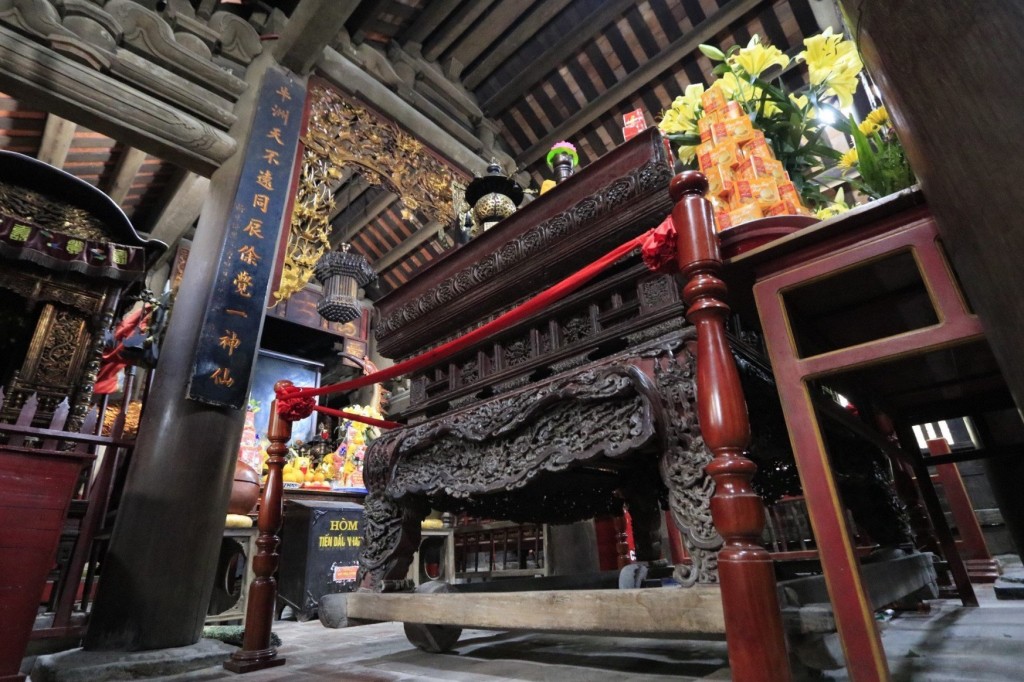 Local community members engaged in preserving Keo Pagoda, fostering a sense of ownership.
Local community members engaged in preserving Keo Pagoda, fostering a sense of ownership.
8.1 How Can Community Involvement Enhance Preservation Efforts?
Community involvement enhances preservation efforts by fostering a sense of ownership and responsibility for Keo Pagoda. Local residents can contribute their knowledge, skills, and time to restoration projects, monitoring the site, and promoting sustainable tourism. The World Monuments Fund emphasizes the importance of community engagement in preserving cultural heritage sites.
8.2 What Traditional Skills Can Contribute to Conservation?
Traditional skills such as carpentry, carving, and masonry are valuable assets in conserving Keo Pagoda. Local artisans possess the knowledge and techniques necessary to repair and restore the pagoda’s structures using traditional materials and methods. The Intangible Cultural Heritage section of UNESCO recognizes the importance of preserving traditional skills for cultural heritage conservation.
8.3 How Can Local Knowledge Benefit Conservation Strategies?
Local knowledge about the history, environment, and cultural significance of Keo Pagoda can inform effective conservation strategies. Local residents may have insights into the pagoda’s past, the local climate, and traditional practices that can help protect the site. The International Council on Monuments and Sites (ICOMOS) promotes the use of local knowledge in cultural heritage conservation.
9. What are the Legal and Policy Frameworks for Protecting Keo Pagoda?
The protection of Keo Pagoda is supported by various legal and policy frameworks at both the national and international levels. Vietnam’s Law on Cultural Heritage provides a legal basis for protecting and preserving cultural heritage sites, including Keo Pagoda. Additionally, the pagoda’s designation as a Special National Monument provides further legal protection and access to government funding for conservation efforts. International conventions such as the UNESCO World Heritage Convention also support the protection of cultural heritage sites through international cooperation and technical assistance.
9.1 What Does Vietnam’s Law on Cultural Heritage Stipulate?
Vietnam’s Law on Cultural Heritage stipulates the protection, preservation, and promotion of cultural heritage sites, including Keo Pagoda. The law outlines the responsibilities of government agencies, organizations, and individuals in preserving cultural heritage and provides penalties for violations. The Ministry of Culture, Sports and Tourism oversees the implementation of the Law on Cultural Heritage.
9.2 How Does National Monument Status Protect the Pagoda?
National Monument status provides Keo Pagoda with additional legal protection and access to government funding for conservation efforts. This status recognizes the pagoda’s outstanding historical, cultural, and architectural value and mandates its preservation for future generations. The National Heritage Council is responsible for designating and overseeing the management of National Monuments.
9.3 What International Conventions Support the Protection of Keo Pagoda?
International conventions such as the UNESCO World Heritage Convention support the protection of Keo Pagoda through international cooperation and technical assistance. These conventions promote the identification, protection, and preservation of cultural heritage sites of outstanding universal value. UNESCO provides resources and support for member states in implementing these conventions.
10. What Future Challenges and Opportunities Exist for Keo Pagoda’s Preservation?
Looking ahead, Keo Pagoda faces both challenges and opportunities in its preservation journey. Climate change, tourism pressures, and funding constraints remain significant challenges that require ongoing attention and innovative solutions. However, advancements in conservation technology, increased community engagement, and growing awareness of cultural heritage preservation also present opportunities for enhancing protection efforts. By embracing these opportunities and addressing the challenges proactively, Keo Pagoda can continue to thrive as a cultural treasure for generations to come.
10.1 How Can Climate Change Challenges Be Addressed in the Future?
Addressing climate change challenges requires implementing adaptation measures such as improving drainage systems, reinforcing structures, and monitoring environmental conditions. Mitigation strategies, such as reducing carbon emissions and promoting sustainable practices, are also essential for minimizing the long-term impacts of climate change on Keo Pagoda. The Intergovernmental Panel on Climate Change (IPCC) provides scientific assessments and recommendations for addressing climate change.
10.2 What Opportunities Exist for Enhanced Community Engagement?
Opportunities for enhanced community engagement include involving local residents in conservation projects, promoting cultural heritage education, and supporting community-based tourism initiatives. These efforts can foster a sense of ownership and responsibility, ensuring the long-term protection of Keo Pagoda. The Aga Khan Trust for Culture promotes community engagement in cultural heritage preservation through various programs and initiatives.
10.3 How Can Innovation in Conservation Technology Help?
Innovation in conservation technology can provide new tools and techniques for monitoring, documenting, and restoring Keo Pagoda. Advanced imaging, environmental sensors, and digital databases can enhance conservation efforts and improve the long-term protection of the pagoda. The Getty Conservation Institute promotes research and innovation in conservation technology for cultural heritage preservation.
Keo Pagoda stands as a testament to Vietnam’s rich cultural heritage, and its preservation is paramount. By understanding the threats it faces and implementing comprehensive conservation strategies, we can ensure its survival for future generations. SIXT.VN is committed to responsible tourism, offering tours that respect and support the preservation of cultural sites like Keo Pagoda.
Address: 260 Cau Giay, Hanoi, Vietnam
Hotline/Whatsapp: +84 986 244 358
Website: SIXT.VN.
FAQ Section
Q1: What is Keo Pagoda and why is it important?
A1: Keo Pagoda, or Than Quang Tu, is a nearly 400-year-old pagoda in Thai Binh province, Vietnam, renowned for its traditional architecture and national treasures, including dragon doors and an incense burner. It’s a significant cultural and historical site.
Q2: What are the biggest environmental threats to Keo Pagoda?
A2: The biggest environmental threats include climate change (increased humidity and flooding), air pollution from nearby industries, and potential natural disasters like typhoons and earthquakes.
Q3: How does tourism impact the preservation of Keo Pagoda?
A3: Tourism can lead to wear and tear on ancient structures, damage to artifacts, and disruption of the site’s tranquility if not managed sustainably.
Q4: What are the main challenges in preserving the wooden doors at Keo Pagoda?
A4: The main challenges include humidity, which promotes mold and wood rot, and physical damage from handling or environmental factors.
Q5: What role do local communities play in preserving Keo Pagoda?
A5: Local communities are essential in fostering a sense of ownership and responsibility, participating in restoration projects, monitoring the site, and promoting sustainable tourism.
Q6: What conservation efforts are currently in place at Keo Pagoda?
A6: Current efforts include regular structural inspections, restoration projects, environmental monitoring, security enhancements, and sustainable tourism initiatives.
Q7: How can technology aid in the preservation of Keo Pagoda?
A7: Technology aids through 3D scanning for detailed models, environmental sensors for real-time monitoring, and digital databases for improved information accessibility.
Q8: What sustainable tourism practices can help preserve Keo Pagoda?
A8: Limiting visitor numbers, promoting responsible behavior, supporting local businesses, and investing in conservation efforts are key sustainable practices.
Q9: What legal and policy frameworks support the protection of Keo Pagoda?
A9: Vietnam’s Law on Cultural Heritage and the pagoda’s designation as a Special National Monument provide legal protection and access to government funding.
Q10: How does SIXT.VN contribute to the responsible exploration of cultural sites like Keo Pagoda?
A10: SIXT.VN offers tours that respect and support the preservation of cultural sites, ensuring visitors can explore Vietnam’s rich heritage responsibly and sustainably.



